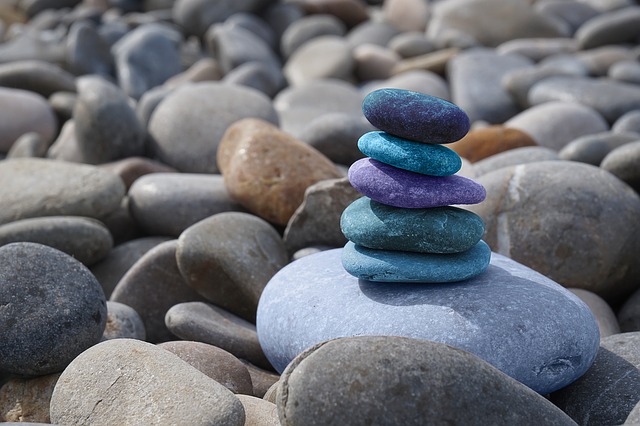In the very early stages of this blog I discussed Tai Chi as a pathway to mindfulness. I also highlighted the challenges I experienced in maintaining daily practice of Tai Chi along with meditation and writing this blog, when I still had a range of professional and personal commitments to fulfill on a regular basis. I concluded then that keeping the benefits of Tai Chi at the forefront of my mind, aligning my Tai Chi practice with the timing of my highest energy levels (I’m a morning person) and continuously reading and writing about Tai Chi would build my motivation for daily practice.
In 2018, I explored the benefits of Tai Chi for the mind-body connection based mainly on research that had been conducted at various centres of research at UCLA such as those focused on psychoneuroimmunology and East-West Medicine. This current post highlights the work of Dr. Peter Wayne who is associated with the Harvard Medical School.
Peter Wayne, who has spent decades practising, studying and researching Tai Chi, stresses the power of Tai Chi to deepen the mind-body connection. Peter is the Research Director for the Osher Center for Integrative Medicine and the founder of The Tree of Life Tai Chi Center.
The eight active ingredients of Tai Chi
In 2013, Peter published a book, The Harvard Medical School Guide to Tai Chi, summarizing the research around Tai Chi and highlighting what he calls the “eight active ingredients of Tai Chi” which he had developed through his own research and the teaching of Tai Chi Masters. These ingredients focus on the “biological mechanisms” that contribute to the wide-ranging benefits of Tai Chi including those related to cognition, breathing and neuromuscular control. Peter points out that this focus on active ingredients helps him in multiple ways – in shaping a curriculum for teaching Tai Chi, in communicating with members of the medical profession and in establishing clinical trials.
In an interview with Dan Kleiman about his research and teaching, Peter explained that his early study of evolutionary biology and ecological modelling helped him to develop a systems perspective that is holistic in orientation and strongly akin to Chinese Medicine. His orientation to integrative medicine and his mind-body perspective on Tai Chi flow from this early academic training and related research experience. In a technical presentation Neuroscience in the Body: Perspectives at the Periphery, Peter highlights the downside of having multiple medical specialisations that contribute to “reductionist thinking” and blind us to the whole-body benefits of interventions such as Tai Chi.
The eight active ingredients of Tai Chi identified in his book highlight his integrative, systems perspective:
- Mindfulness
- Intention
- Structural integration
- Relaxation (of the mind and body)
- Strengthening and building flexibility
- Freer breathing
- Social interaction and community (if done in a group)
- Embodied philosophy and ritual.
Deepening the mind-body connection through Tai Chi
Peter explained in his interview with Dan Kleiman that the integrative nature of Tai Chi and its capacity to deepen the mind-body connection is demonstrated in the focus on mindful breathing (which is common to all martial arts). He pointed out that mindful breathing requires improved posture; positively impacts your nervous system, cardiovascular system and mood; and stills what Seth Godin calls the “Lizard Brain” through enhancing the power of focus. In Peter’s view, an ecological perspective on health recognises that all these processes of body and mind are intertwined and mutually interdependent.
In his neuroscience presentation mentioned above, Peter described Tai Chi as a “multi-component mind-body exercise”. He stressed the interaction of mind-body through Tai Chi by stating that it “integrates slow intentional movement with breathing and multiple cognitive skills”. The cognitive skills he refers to include body awareness, focus and visioning using imagery.
He illustrated the benefits of the mind-body connection involved in Tai Chi by mentioning several research studies that show two key outcomes (1) the primary risk factor in falls of people over 65 is “fear of falling” and (2) Tai Chi has been shown to reduce the fear of falling by 35%. Tai Chi achieves this result not only by strengthening muscles and improving coordination and sensation (especially in the feet), but also by reducing falling anxiety, increasing exercise self-efficacy and improving the “executive function” of the brain. Peter suggests that Tai Chi is a “gateway exercise” – increasing people’s confidence to try other things that lead to overall wellbeing.
Reflection
Research into the impacts of Tai Chi reinforce its power to improve our mind and body and the mind-body connection that is so critical for daily functioning, quality of life and longevity. I have already identified the personal benefits that motivate me to practise Tai Chi. However, Peter’s research and presentation has increased my desire to improve the frequency of my Tai Chi practice.
As we grow in mindfulness through meditation, research and reflection, we gain a better understanding of the mind-body connection, the impacts of our thinking and self-stories on our intentions and the blockages that impede putting our resolutions into effect, particularly at this time of the year (with the start of 2020). I can look forward to improved Tai Chi practice and the multiple personal benefits that can accrue (not the least of these being to improve my tennis game!).
__________________________________________
Image by Antonika Chanel from Pixabay
By Ron Passfield – Copyright (Creative Commons license, Attribution–Non Commercial–No Derivatives)
Disclosure: If you purchase a product through this site, I may earn a commission which will help to pay for the site, the associated Meetup group and the resources to support the blog.

